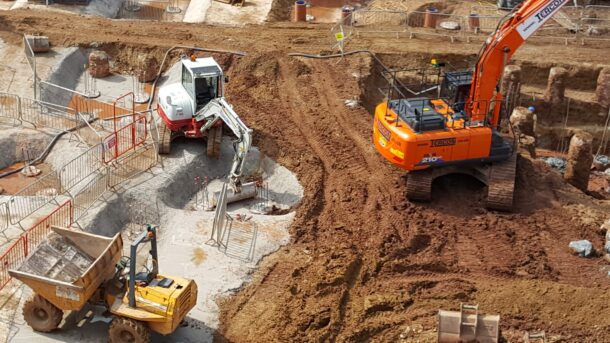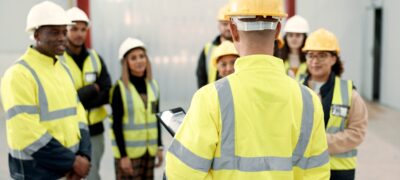Breathe in the fresh air…or is it?
So fundamental for life that we take it for granted: we expect the air that we breathe to be clean.
But in many places in Ireland – busy towns and cities in particular – it isn’t. In 2023 the European Environment Agency estimated that there were 1,300 premature deaths annually in Ireland due to poor air quality.
There are many sources of air pollution but some of the biggest culprits are from the use of fossil fuels, which generate fine particulate matter when they burn. In Ireland the biggest culprit for these emissions is the use of solid fuel such as coal, peat or wood for heating.
Air Quality - Sustainability Short
Reducing the impacts of poor air quality is a significant issue which we need to take into account in how we run our construction sites and the kinds of plant and equipment we use. Watch this short animation to get an introduction on why air quality is a key issue on construction sites, and most importantly, what you can do to reduce air pollution when you’re working on site.

Another big source of air emissions is from transport. Particulates such as PM 10 and PM 2.5 and gasses such as NO2 are produced by petrol, and particularly diesel engines, and can lead to a number of adverse health impacts, particularly in children.
Pollution from traffic is a particular problem in urban areas and exceedances of EU limit values have been observed in urban centres, such as St John’s Road West in Dublin. The National Ambient Air Quality Network monitor and provide information on air quality across Ireland in real time.
Whilst European standards are forcing manufacturers to make new vehicle engines to ever cleaner limits, there is still a large number of vehicles and plant in Ireland that have older, less clean emissions.
Emissions can be reduced by using more modern equipment that inherently has lower emissions, using tailpipe solutions such as diesel particulate filters to reduce emissions, and better driver behaviour to minimise necessary emissions.

The reason for this is that the use of diesel creates emissions of nitrogen dioxide and fine soot (particulate matter), more so than from petrol engines, that if not reduced or controlled are known to cause significant chronic health problems such as respiratory diseases and cancer.
Moreover, poor air quality has a disproportionate impact on those who are most vulnerable in society, including children, those with pre-existing conditions and the elderly.
Of course, switching fuel and power source to an alternative with lower emissions is the goal for both air quality and climate change impacts – hybrid, battery, hydrogen.
But it’s not just about poor air quality from plant and vehicles
Indoor air quality is a serious issue too, sometimes dubbed ‘sick building syndrome’. Having good quality air indoors not only improves peoples’ health, but also their wellbeing and productivity levels – the simple build up of CO2 indoors has been shown to make people more drowsy and less effective. We should therefore be mindful of the air conditioning and ventilation systems we use to ensure that we are providing decent air indoors as well as outside.
Air Quality
Air Quality – Sustainability Short
Video
Air Quality
Air Quality in the Built Environment
Document/Presentation
Air Quality
Air Quality in the Built Environment
Web link
Air Quality
Air Quality in Ireland Report 2022, from the EPA
Web link
Air Quality
Assessment of indoor air quality in energy efficient residential buildings in Ireland
Document/Presentation
Air Quality
BESA Guide to Good Practice for Indoor Air Quality for Health and Well-being
Document/Presentation
Air Quality
EU Standards for non-road engines
Web link
Air Quality
Clean Air Strategy For Ireland
Document/Presentation







 5 minutes
5 minutes